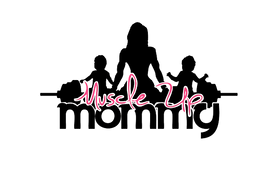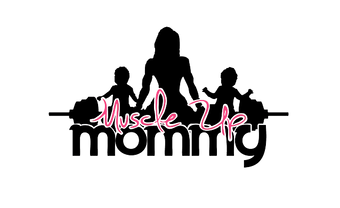The Pitcher Method For Storing Breastmilk: Pros, Cons, And Tips


Table of content
What Is The Pitcher Method?
The pitcher method is a technique used to store pumped breastmilk in an organized and compact way.
It's not uncommon for pumped volumes to fluctuate throughout the day. So rather than having a bunch of bottles with various amounts, many breastfeeding moms use the pitcher method to safely combine all same-day pumped milk into one large pitcher or jar.
Other useful benefits include using the pitcher method to:
- make bottles with an even amount of breastmilk for each feed.
- eliminate the guess work on which bottles were pumped when.
- simplify bottle preparation for family/babysitter when you plan on being separated from baby for an outing, self-care day, or other.
How Does It Work?
I have found it relatively easier to start the day with two 16oz mason jars. One that is used for cooling and one that is used to combine all the milk from the day.
Once my freshly expressed milk is placed in the fridge to chill, I later mix it in with the rest of my milk that was pumped from the day, clean the now empty jar, pump and repeat the steps until the end of the day.
Some moms use the large "collection jar" to then prepare bottles for the next day and store the leftover milk into freeze safe storage bags. Other moms like myself find it easiest to just let the milk sit in its "collection jar" until needed, but before it expires.
It's important to note that the CDC and Health regulation guidelines recommend that warm breastmilk not be mixed with cooled breastmilk as it could rewarm the temperature of the already cooled milk and thus reducing the expiration date.
How To Label Pitchers and Milk Storage Bags?
All milk whether stored in the fridge or stored in the freezer should have the day the milk was pumped and the expiration date visibly labeled so that you can quickly refer to it before each use.
For mason jars, I recommend using a dry erase marker as the dates can be easily wiped and rewritten for each new day.
Breastmilk stored in the fridge can be stored and is good to consume for up to 4 days and in a standard freezer up to 6 months.
Creating a Balanced Bottle For Baby
There are suggestions that the pitcher method allows for foremilk and hindmilk to be mixed together to create a more balanced bottle during each feed and reduce lactose overload.
Lactose overload happens when you're pumping more foremilk, the more watery based, low in fat and higher in sugar milk, instead of having a well balance that includes hindmilk, the more creamy milk that is higher in calorie-rich fats.
- The type of milk you express is largely based on how long you wait in between feeds
- how long your pump sessions are and if you're expressing during let downs
- or if you're switching between sides too soon.
While using the pitcher method, all contents expressed from the day will be mixed in and the fat in your milk can be swirled in from the walls of the pitcher and re-mixed into the milk creating a more balanced bottle during each feed.
All in all, the pitcher method has helped tons of busy mamas with one or all of these benefits.
Things to Consider While Using The Pitcher Method?
The pitcher method has excellent benefits, but there are other important factors to consider beforehand.
Our bodies naturally produce cortisol hormones at the start of the day and melatonin at the end of the day to help aid in your baby's wake-sleep cycle.
While utilizing the pitcher method, there is no differentiating the time milk was expressed unless you intentionally take extra steps to keep separate pitchers for morning and day milk versus night milk.
Though this may will create an extra step when labeling bottles, it will help with sleep training and helping your baby understand morning from night.
My personal experience
I have tried both methods of labeling and separating AM and PM milk, and mixing all milk within a 24-hour period together, and I find the routine to have no significant difference in prep time.
When beginning my breastfeeding journey, I learned about wake-sleep cycles, and doing my part to aide in better sleeping habits for my baby has helped my family overall.
That said, separating AM and PM milk has been a great choice.

Alternatively, there may be nights where I nurse baby to sleep and pump on the adjacent breast. This not only allows for night milk to remain night milk, it allows us both to continue our mother-baby bond that may be missed during the day, and:
- baby gets better sleep.
- less bottles to clean for morning.
- feeding on demand during the night without having a need to measure a night time bottle.
- less up and down for me during the night which allows for more rest and an energized start to my day.
Benefits Of Pumping Instead of Nursing Only
One of the major benefits to pumping as a breastfeeding mom is having an emergency milk stash readily available if you have to step out for any reason.
Having a stash available means:
- baby still being able to receive breastmilk even if not being fed by mom.
- dad and siblings being able to help mom with feedings and create a bond of their own.
- taking a break from breastfeeding and reducing nipple soreness.
- reducing the amount of time that you have to sit idle to breastfeed.
- allowing time for mom to do other things during feed times once baby can hold their own bottle.
- having milk readily available to use for spontaneous date nights or work delays.
pumping schedule
For moms with newborns, it is recommended that you begin pumping every 2-3 hours to match your baby's feeding demands.
More often than not, pumping moms experience a surplus of milk, considered oversupply, because the pumped volumes can be greater than baby's consumption amount.
Though not necessary, many breastfeeding moms find it helpful to use the first few weeks postpartum to store any excess breastmilk in the fridge or freezer to save for later use, using the pitcher method.
When it comes to recommended storage timeframes and things to avoid when pumping , you can learn more here.
Recommendations For Postpartum Support
The fourth trimester is where the fun starts for mama. Recovering, getting adjusted to nursing, and soon enough, beginning core rehab and postpartum fitness.
Here are some top items we recommend for your journey.
Breastfeeding Support
The hands-free Wearable Breast Pump J35 simplifies breastfeeding.
The sleek design fits right into your nursing bra for a discreet and convenient pump anywhere you are.
You can finally ditch the restrictive pumping next to the wall and avoid dealing with clunky parts and annoying wires/tubes.
- Get all-day use on a single charge.
- Catch up to 7 ounces.
- Easy on-the-go pour spout to prep bottles with freshly pumped breast milk.
- Charges by USB for added flexibility.
The all-in-one Maternity Nursing Bra supports breastfeeding and pumping.
Give yourself the flexibility to feed on demand and pump on the go during those busy work days.
- There's a quick release with the one-handed clip down function.
- 4-way stretch for extreme comfort
- Adjustable hook closure for best fit.












Leave a comment